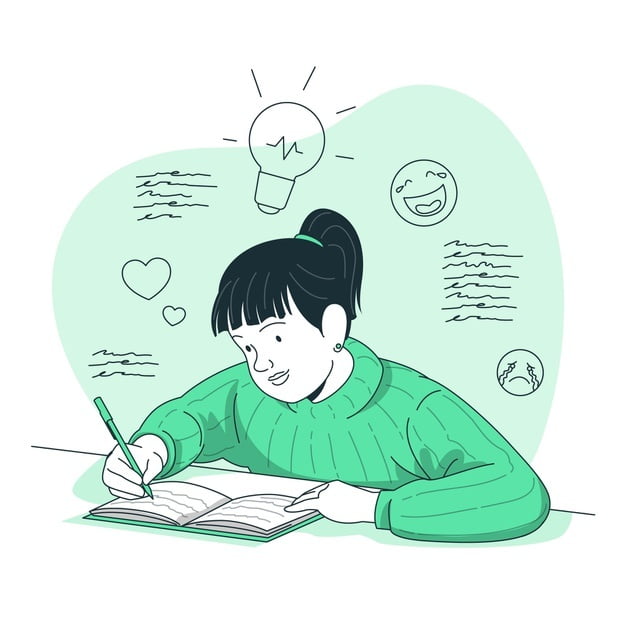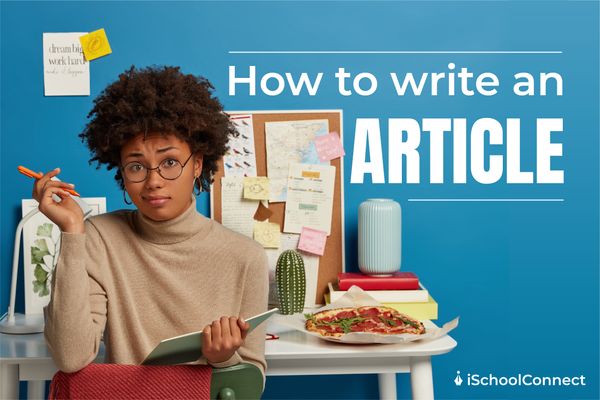Table of Contents
When they said that the pen is mightier than the sword, they meant that any thought put down on paper has the power to change the entire outlook of the reader. However, an article can have maximum effect only if edited and formatted accurately to bring out the theme in the best way possible. This is why learning how to write an article correctly is important. Given below is a detailed description of article writing, the standard article writing format, what you should include and what you should avoid.
What is article writing?
Article writing is a formatted way of presenting a piece of information through print or electronic media. Articles are written mostly for newspapers, magazines, examinations, and other online platforms. Certain job interviews also involve article writing, which helps interviewers test the language skills of their candidates.
What to start with?
An article should always be written in an organized and methodical way, so as to grasp the reader’s attention. Here’s how you do it-
First, identify the objective of the article
- The objective should bring out the topic or the current issue to the limelight.
- The article should provide relevant information on the topic.
- It should offer suggestions and pieces of advice.
- It should influence the readers and compel them to think.
- The article should explore various stories, persons, locations, and other related experiences.

Next, we identify the external aspects
- Be aware of the type of article that you are writing – whether informative or based on current issues, entertainment, advice or for comparisons, etc.
- Understand the target audience and their connection to the topic.
- Optimize the amount of information and reliable data you have acquired related to the topic.
- Ensure that this data is organized in a simple and logical order.
Article writing format
Here’s how you should structure your article-
| 1. Heading The heading of your article should be engaging, and it should not be more than 5 to 6 words. Make sure the title is free of spelling mistakes and grammatical errors. Do not use punctuation marks here, as it influences the tone with which you begin the topic. |
| 2. Byline The byline is the name of the person writing the article. |
| 3. Body The body is the central part of article writing, and bears the majority of the information. Usually, it consists of at least 3 to 4 paragraphs. Paragraph: This is the introductory paragraph of the body. Here, you should briefly explain what the article is talking about. Try adding some quotations or facts to incite the interest and anticipation of your readers. Also, try to use simple language. Paragraphs 2 & 3: In these paragraphs, you must break down the topic with a complete analysis of the subject matter or topic in discussion. These paragraphs can include any one of the following- 1. Subject scrutiny. Here, you must analyze and explain the matter. Mention any problem that exists and the cause behind it. 2. Current Situation. In this bit, explain the current situation of the matter or topic and share what actions are being taken to correct it. This may include the factors affecting the current scenario, the advantages and disadvantages of the problem, and so on. 3. Cause and Effect Relationship. Create the cause and effect relationship by backing it up with facts or data. Here, you may also share the consequences of this relationship. |
| Conclusion You should never leave your article open-ended. Add a conclusion in the end that talks about the problems and states the actions that are being taken to solve them. You can also share your own ideas and solutions, along with their advantages and disadvantages! Your writing should be simple, precise, and flowing. |
Important tips to keep in mind

- Keep the title short, catchy, interesting, and clear.
- The introduction or the initial paragraph must be highly attractive without giving out too much information about the topic. You can also use some interrogative words to incite interest.
- Always keep a few general quotes handy. They help in presentation and also show that you have prepared well.
- Avoid repeating thoughts and ideas.
- You may give your personal opinion in one or two lines, but make sure you mention that it is your take on the topic.
- Do not stray away from the topic.
- Write small sentences. It reduces the risk of grammatical errors.
- Make sure you double-check for grammatical accuracy and spellings.
- Read editorials and articles in a few newspapers and notice the pattern.
- Underline all the important points.
- According to the article writing format, you should be mindful of the tense being used and avoid abbreviations and colloquial language.
Common mistakes to avoid
- Writing lengthy paragraphs. People tend to lose focus when they see a huge bulk of words put together.
- Keeping the language too formal.
- Not providing facts about similar events. This helps the audience to get an all-around understanding and connect to the topic.
- Adding personal information about the author. Expression of views is fine, but you must avoid adding any information about your background, education, etc.
Last thoughts
Although there are hundreds of articles and topics to discuss, the scope for new ideas never ceases. If you stick to the article writing format above and present it in your unique way, you are sure to leave a distinctive impression on your readers. So go ahead and pick up that pen (or start clicking those mechanical keys)!
Feel free to check out our blog for more such tips!
Happy writing!






